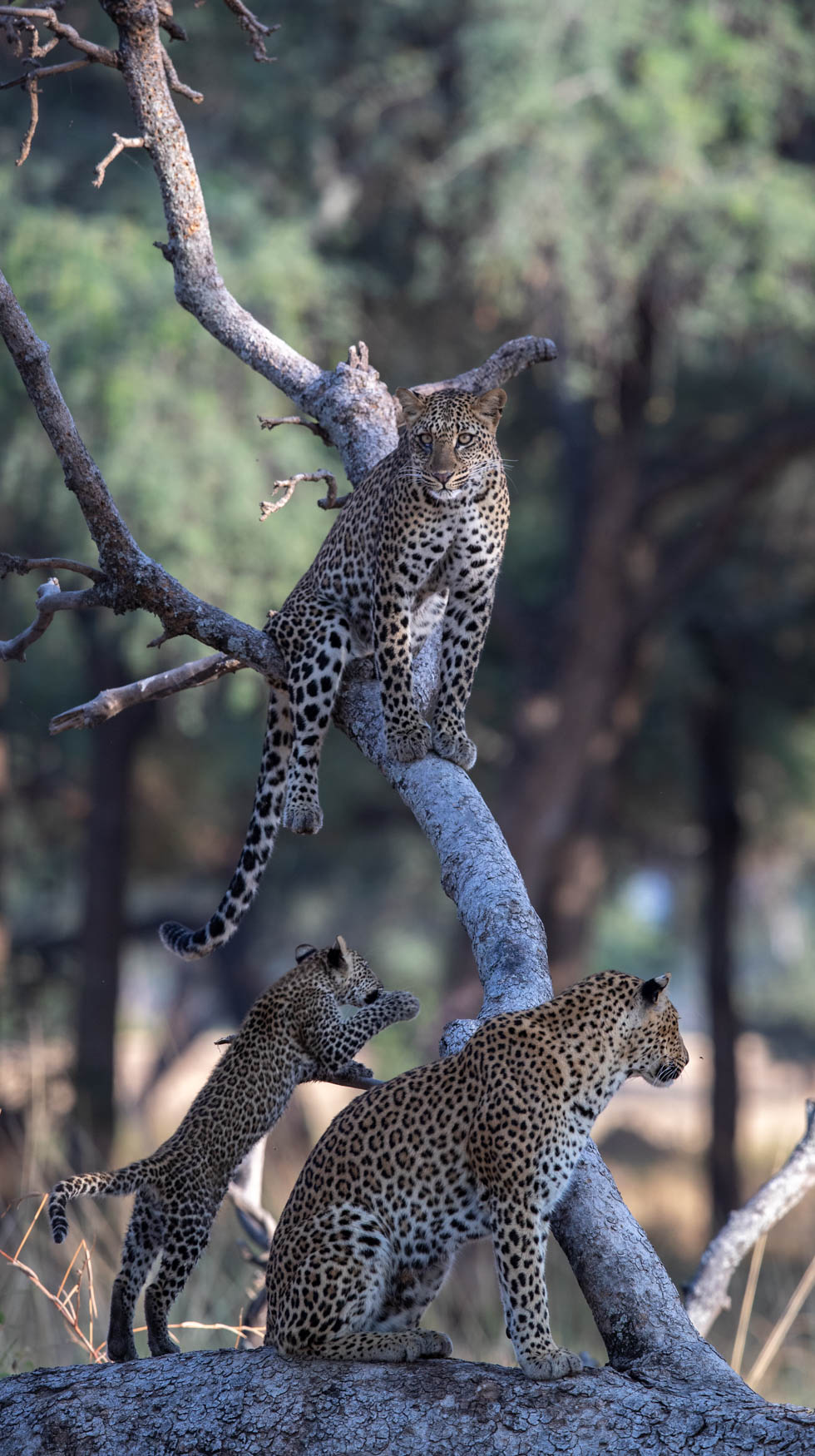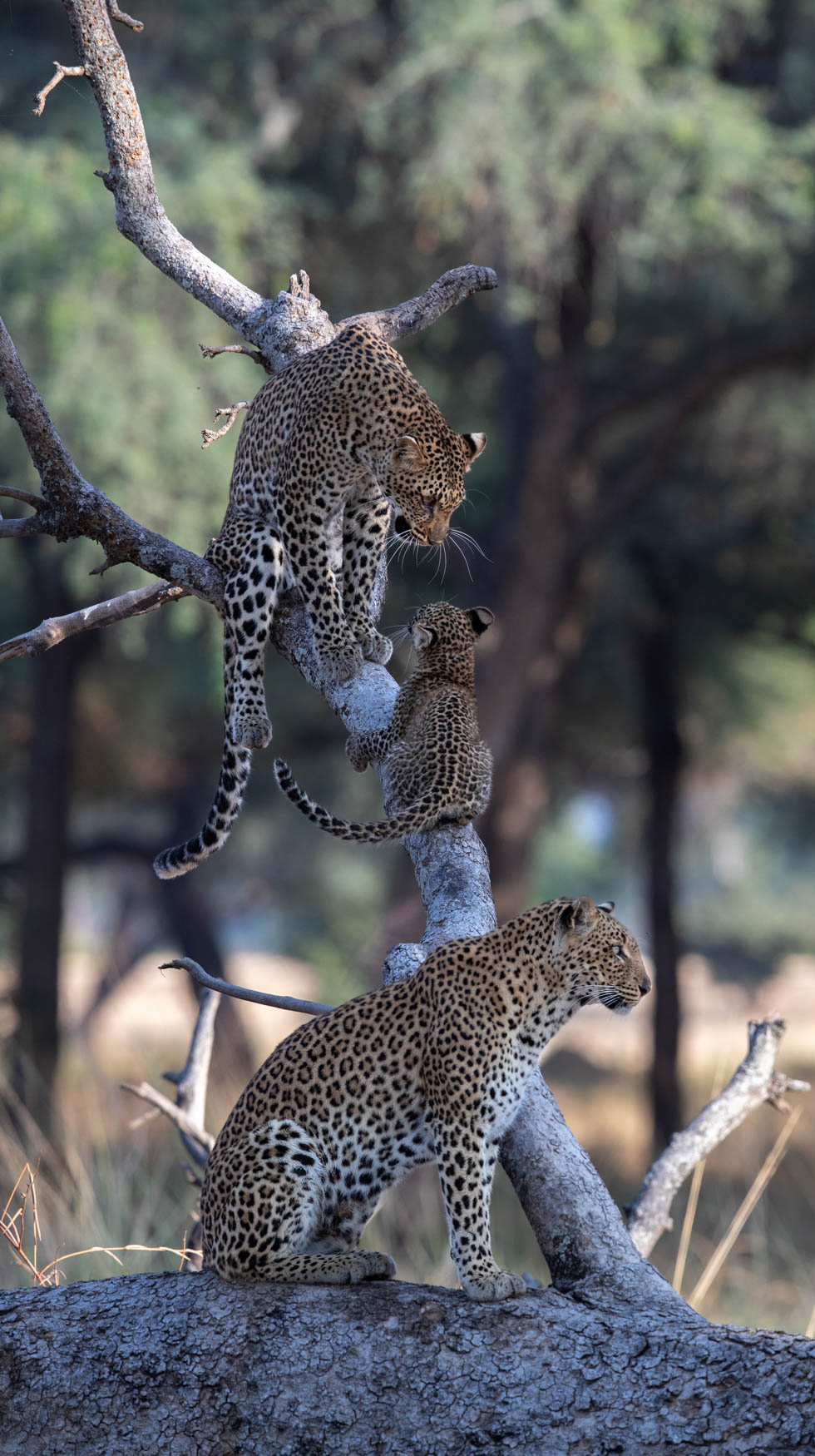Leopards are without a doubt one of the most sought after animals on safari and recently my guests and I witnessed some unique leopard behaviour in the Lower Zambezi.
Leopards, although primarily solitary animals, exhibit a complex social structure that is shaped by their need for territories and breeding opportunities.
Understanding the social dynamics of leopards provides valuable insights into their behaviour and interactions with other individuals of their species. In this blog we delve deeper into the social structure of leopards and the factors that influence their social behaviour.


So with the above taken into account, the behaviour of these leopards goes against the "normal" behaviour we have come to expect from these elusive creatures.
Here are a few theories that I have come up with, and I'm by no means saying that this is what it is, it is purely my observations.
- Safety for the small cub. By having the sub adult around, the mother leopard can be at ease when going out to hunt, knowing that the sub adult is with the cub and can protect it, or at the very least warn it from any possible danger like lions, hyaenas and even baboons.
- Higher success rate with hunting. The curiosity of the small cub can often give the mother's presence away, like we witnessed on a few occasions. As the mom goes on the hunt she has to carefully plot her every move, to make sure that she does not get spotted by prey or baboons, and with the cub unaware of these finer skills, her presence often gets exposed.
- Hunting in partnership. On the flip side from the above theory, the sub adult could also assist the mother in cornering off prey and possibly taking down larger prey than if she were to be by herself.
- Fending off potential enemies. The Lower Zambezi does not have a very high hyaena or lion population, but there are a lot of baboons around which can be a real threat to leopard, especially cubs. The way the mother allowed the sub adult to feed with her and the little cub suggests that this could well be true. It could also be that with the 3 of them together they might finish the carcass sooner than if it were only the mom and the cub, which means less time for other predators to be aware of the carcass and potentially steal their prized kill.
Like I said, these are all theories and my no means to only possibilities. Whatever the reasons, it definitely was some unique leopard behaviour in the Lower Zambezi.
What do you think? Why would this behaviour be adopted?
Look forward to hearing the thoughts...
Johan
Treasures of the Lower Zambezi
The Lower Zambezi National Park, by virtue of the Zambezi River and its parallel escarpment, is definitely one of Africa’s most scenic wilderness areas. Home to an impressive quantity and variety of wildlife which can be viewed by land based safari activities, from a variety of water based activities and from the camps themselves, all of which makes for a unique and exciting safari adventure.
